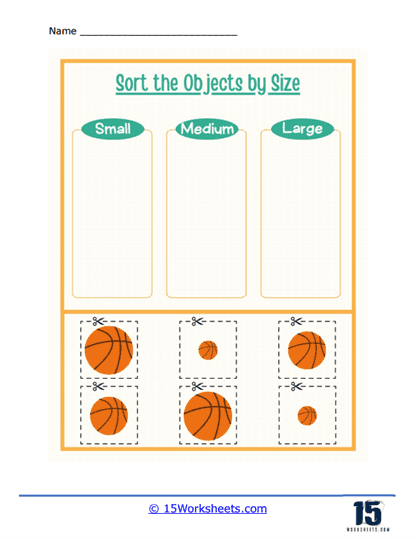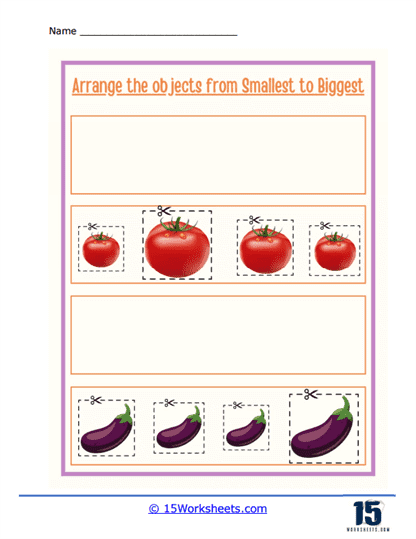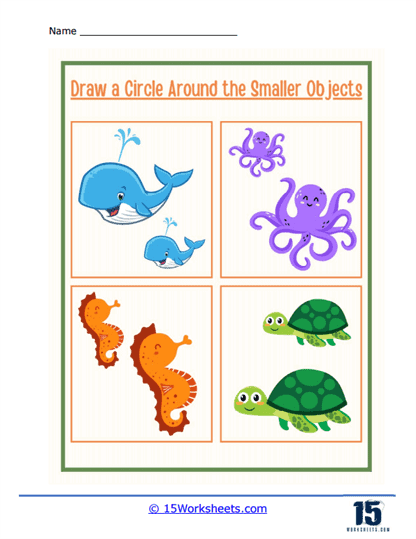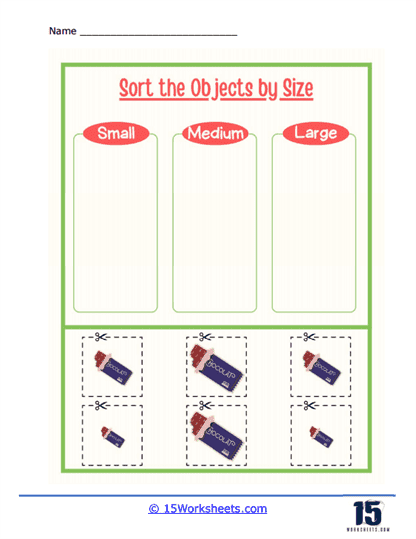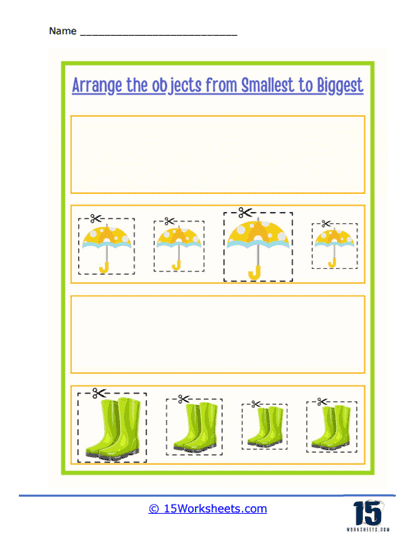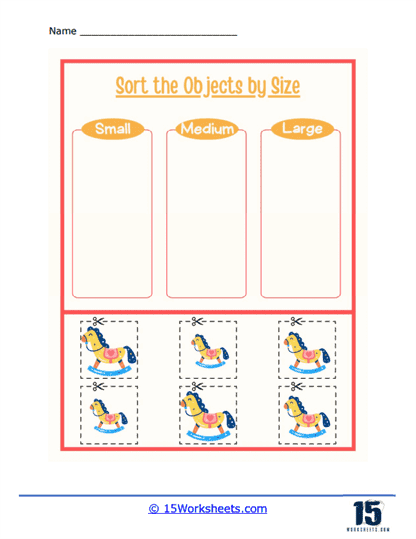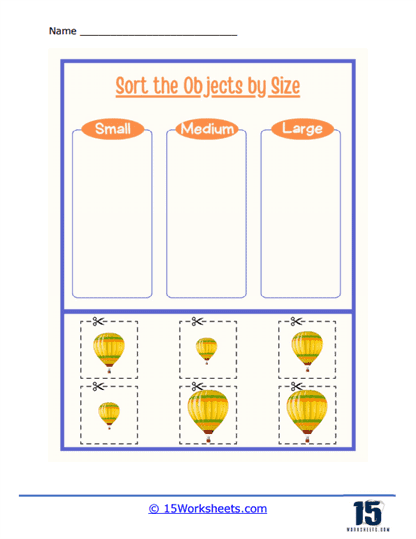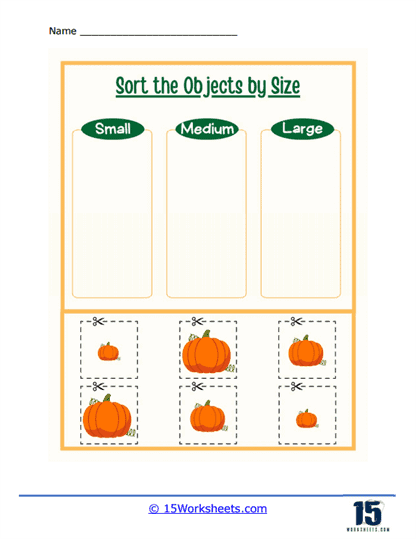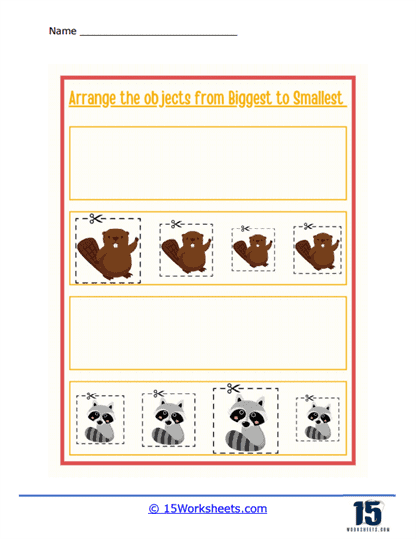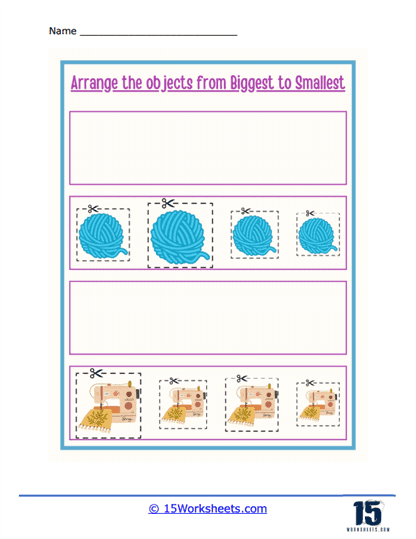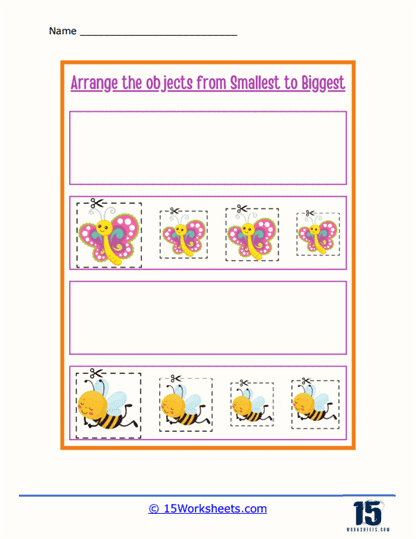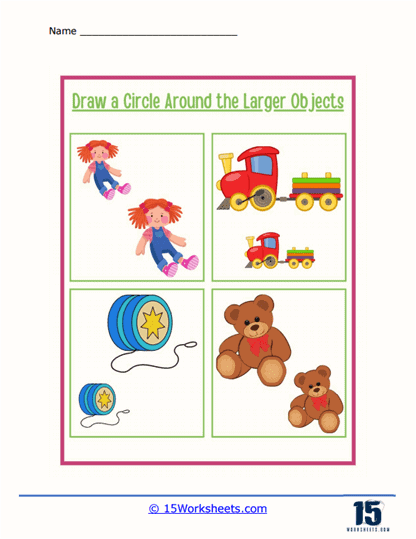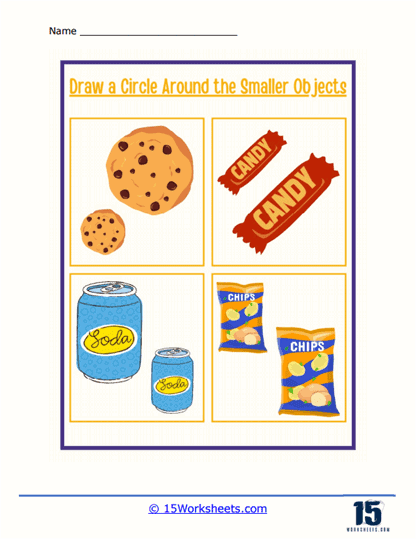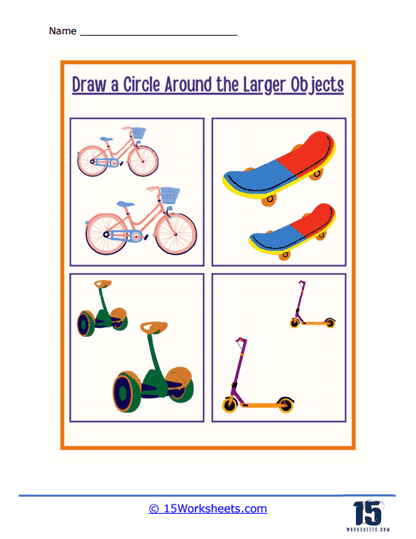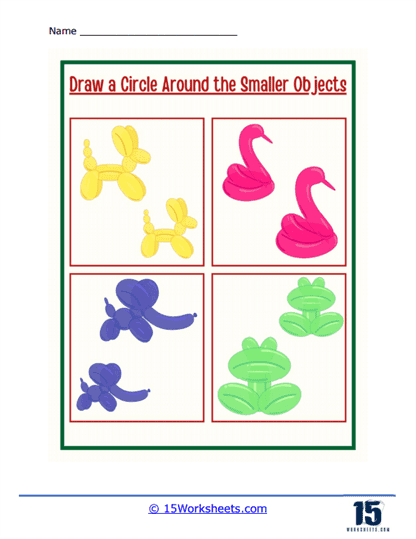Sort By Size Worksheets
What are Sort By Size Worksheets?
These worksheets will help children their ability to sort and classify objects based on their size. The common problem type found on these worksheets asks children to identify and group objects based on their size.
Sort by size worksheets can come in many different forms, such as fill-in-the-blank exercises, matching games, and puzzles. Some worksheets might ask children to sort objects into groups based on their size, while others might ask them to identify objects that are bigger or smaller than a given object. Many sort by size worksheets also include visuals and illustrations to make the learning process more engaging and enjoyable for young children.
Sorting by size means putting things in order from biggest to smallest or from smallest to biggest. It’s like arranging objects based on how big or small they are.
Imagine you have a bunch of different toys, like blocks, balls, and cars. Some toys are big, some are medium-sized, and some are small. When we sort them by size, we put all the big toys together, all the medium-sized toys together, and all the small toys together. We create groups based on how big or small the toys are!
Sorting by size helps us see the differences in how things look. It makes it easier to find what we need because things are organized. For example, if we want to play with a big block, we know where to look because all the big toys are in the same group.
Sorting by size can be a fun activity to do when we want to tidy up or when we’re playing with different objects. It helps us understand the concept of size and how things compare to each other. Plus, it’s a great way to appreciate the different sizes and shapes of objects around us!
Teaching the math concept of sorting by size can be done using various methods. Here are some strategies you can use:
Real Objects – Use real objects of different sizes, such as toys, blocks, or household items, and ask children to sort them into groups based on their size. Encourage them to use words like “big,” “small,” “bigger,” and “smaller.”
Size Charts – Use size charts or posters that show different sizes and their corresponding names. This helps children learn size names and identify sizes more accurately.
Sorting Activities – Provide children with a variety of objects and ask them to sort them into groups based on their size. This activity helps them understand the concept of classification and grouping.
Comparing Objects – Ask children to compare objects and identify which ones are bigger or smaller. You can use pictures or real objects for this activity.
Worksheets – Use sort by size worksheets to give children more opportunities to practice and apply the concept of sorting by size.

